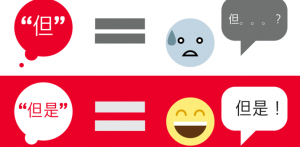Difference between revisions of "Language/Mandarin-chinese/Vocabulary/The-Chinese-Bigram"
< Language | Mandarin-chinese | Vocabulary
Jump to navigation
Jump to search
(Created page with "thumb <div style="font-size:300%"> The Chinese Bigram: Why Learning Chinese Characters is Easier in Twos?</div> ==What is a Bigr...") |
m (Quick edit) |
||
| (3 intermediate revisions by 2 users not shown) | |||
| Line 1: | Line 1: | ||
[[File: | [[File:Chinese Bigram PolyglotClub.png|thumb]] | ||
<div | <div class="pg_page_title"> The Chinese Bigram: Why Learning Chinese Characters is Easier in Twos?</div> | ||
==What is a Bigram? == | ==What is a Bigram? == | ||
| Line 9: | Line 8: | ||
工 (gōng) is one of the most commonly used characters in the Chinese language and means ‘work’. However, this character is rarely used alone and it more commonly found to create the following words: | 工 (gōng) is one of the most commonly used characters in the Chinese language and means ‘work’. However, this character is rarely used alone and it more commonly found to create the following words: | ||
*工作 (gōng zuò) – to work (工 – work + 作 – to do) | *工作 (gōng zuò) – to work (工 – work + 作 – to do) | ||
*工业 (gōng yè) – industry (工 – work + 业 – business) | *工业 (gōng yè) – industry (工 – work + 业 – business) | ||
*工资 (gōng zī) – salary (工 – work + 资 – money) | *工资 (gōng zī) – salary (工 – work + 资 – money) | ||
*工人 (gōng rén) – worker (工 – work + 人 – person) | *工人 (gōng rén) – worker (工 – work + 人 – person) | ||
==Sources== | ==Sources== | ||
https://www.writtenchinese.com/wp-content/uploads/woocommerce_uploads/2017/05/Chinese-Beginner-Bundle.pdf | https://www.writtenchinese.com/wp-content/uploads/woocommerce_uploads/2017/05/Chinese-Beginner-Bundle.pdf | ||
==Other Lessons== | |||
* [[Language/Mandarin-chinese/Vocabulary/句-jù-phrase;-sentence|句 jù phrase; sentence]] | |||
* [[Language/Mandarin-chinese/Vocabulary/界-jiè-boundary;-circles|界 jiè boundary; circles]] | |||
* [[Language/Mandarin-chinese/Vocabulary/母-mŭ-mother|母 mŭ mother]] | |||
* [[Language/Mandarin-chinese/Vocabulary/惯(慣)-guàn-be-accustomed-to|惯(慣) guàn be accustomed to]] | |||
* [[Language/Mandarin-chinese/Vocabulary/孩-hái-child|孩 hái child]] | |||
* [[Language/Mandarin-chinese/Vocabulary/参(參)-cān-participate|参(參) cān participate]] | |||
* [[Language/Mandarin-chinese/Vocabulary/Months-of-the-year|Months of the year]] | |||
* [[Language/Mandarin-chinese/Vocabulary/红(紅)-hóng-red|红(紅) hóng red]] | |||
* [[Language/Mandarin-chinese/Vocabulary/Transportation|Transportation]] | |||
* [[Language/Mandarin-chinese/Vocabulary/区(區)-qū-area,-district,-region|区(區) qū area, district, region]] | |||
<span links></span> | |||
Latest revision as of 13:15, 27 March 2023
The Chinese Bigram: Why Learning Chinese Characters is Easier in Twos?
What is a Bigram?[edit | edit source]
A bigram, is according to the Oxford Dictionary, “A pair of consecutive written units such as letters, syllables, or words” In the English language, an example of a letter bigram would be ‘th’, as found in ‘the’, ‘their’ and ‘there’. Bigrams also exist in the Chinese language, because almost all Chinese ‘words’ are made up of more than 1 character. Although a single character has its own meaning, it is often when it is combined with another character that it is used as a word in Chinese.
Let’s look at a few examples:
工 (gōng) is one of the most commonly used characters in the Chinese language and means ‘work’. However, this character is rarely used alone and it more commonly found to create the following words:
- 工作 (gōng zuò) – to work (工 – work + 作 – to do)
- 工业 (gōng yè) – industry (工 – work + 业 – business)
- 工资 (gōng zī) – salary (工 – work + 资 – money)
- 工人 (gōng rén) – worker (工 – work + 人 – person)
Sources[edit | edit source]
Other Lessons[edit | edit source]
- 句 jù phrase; sentence
- 界 jiè boundary; circles
- 母 mŭ mother
- 惯(慣) guàn be accustomed to
- 孩 hái child
- 参(參) cān participate
- Months of the year
- 红(紅) hóng red
- Transportation
- 区(區) qū area, district, region
